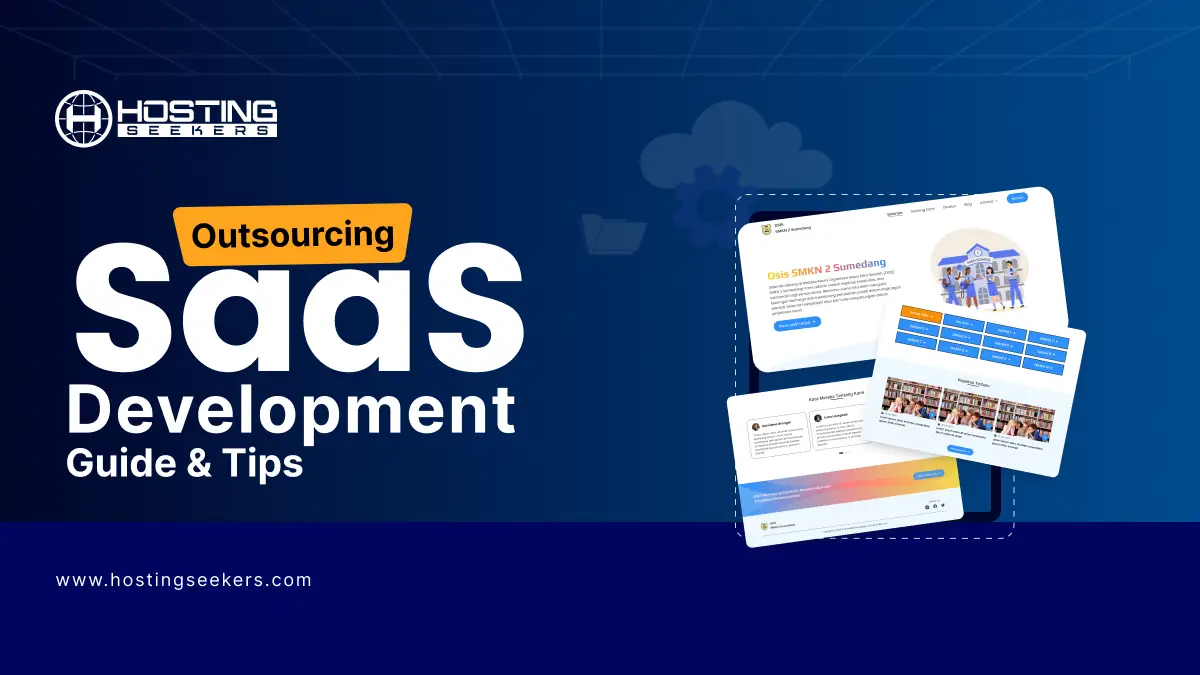
Outsourcing SaaS Development: Guide & Tips
IT Published on : August 1, 2025The digital economy depends on Software-as-a-Service (SaaS) products as the primary method through which businesses provide software solutions. Every business organization, from startups to enterprises, requires agile software applications that are both scalable and user-friendly right now. SaaS platform development within the organization faces major time-consuming expenses and technical difficulties when teams lack particular resources or expertise.
The solution emerges through outsourcing SaaS development. Companies benefit from external expertise to speed up development and minimize costs while maintaining focus on their core business operations. Any strategic business choice, including outsourcing, requires proper planning together with careful caution during execution.
This guide examines SaaS development outsourcing by defining what it entails and explaining its reasons and implementation methods, alongside providing useful examples and practical guidance for your decision-making process.
What is SaaS Development Outsourcing?
A company can achieve cloud-based software solution development through hiring external development teams or vendors to build, maintain, or expand their SaaS products. The external teams will handle work on frontend interfaces together with backend infrastructure, alongside APIs, user authentication, DevOps, and ongoing maintenance.
This model is flexible. The outsourcing model enables businesses to choose between complete project development (full end-to-end construction) and selective work assignments, including UI/UX design and QA testing. Your needs and budget determine whether you should choose nearshore, offshore, or onshore outsourcing from different locations.
Why Companies Choose SaaS Outsourcing
Businesses select SaaS outsourcing instead of internal development due to its multiple advantages. Some of the key advantages include:
1. Cost Efficiency
According to Deloitte, 59% of companies outsource primarily to reduce costs. The cost of employing full-time developers reaches exorbitant levels in regions such as the U.S. and Western Europe. Your organization can access talented developers from all over the world at significantly reduced costs through outsourcing.
2. Access to Global Talent
By outsourcing development work, you can obtain specialized skills in AWS, Kubernetes, React, and AI/ML without needing to spend years on recruitment or training.
3. Faster Time to Market
Experienced outsourcing teams often have pre-built frameworks, agile workflows, and dedicated QA processes. By outsourcing development teams, you can achieve accelerated project cycles, enabling your SaaS product to reach the market more quickly.
4. Scalability & Flexibility
Team size adjustments are possible through scalability to match project requirements. SaaS startups benefit from this flexible approach because their project requirements change frequently.
5. Focus on Core Business
The technical development work handled by external companies frees up your internal teams to concentrate on marketing and acquiring new customers, as well as developing product strategies instead of performing daily coding duties.
SaaS Companies That Outsourced Successfully
Many successful SaaS platforms today were built with the help of external teams at the beginning of their development. Several examples demonstrate how successful companies have been in their SaaS development journey.
1. Slack
Slack began as an internal tool before working with MetaLab to develop its mobile application design. The collaboration between Slack and MetaLab resulted in the creation of Slack’s distinct user-friendly design.
2. GitHub
GitHub used external developers to speed up its growth before Microsoft acquired the company. It relied on outsourced developers to help their core team focus primarily on business development and growth.
3. Skype
Before becoming the leading global communication service, Skype relied heavily on Eastern European developers for building its backend systems. The platform had millions of users and was later acquired by Microsoft. Earlier this year, Microsoft shut down Skype, encouraging users to switch to Teams.
These success stories demonstrate how properly executed SaaS development outsourcing represents a strategic and innovative business decision.
Challenges of SaaS Development Outsourcing
The practice of outsourcing provides numerous advantages, yet it carries several potential risks. Several common issues will be presented together with strategies to reduce their impact.
1. Communication Gaps
Different time zones, language barriers, or unclear expectations can slow progress or lead to misunderstandings.
Tip: Use collaboration tools like Slack, Jira, or Trello, and set up overlapping working hours for daily standups or status updates.
2. Security and IP Concerns
The practice of sharing source code and sensitive data with third-party vendors creates both intellectual property protection challenges and data security threats.
Tip: Always use strong NDAs and service-level agreements (SLAs)—select vendors that demonstrate ISO certification along with SOC 2 compliance.
3. Quality Control
The quality of outsourcing firms varies substantially between different providers. Some vendors demonstrate poor practices by cutting corners, delaying work, or lacking familiarity with your business domain.
Tip: Check references, review portfolios, and run a pilot project before committing to a long-term engagement.
4. Hidden Costs
While outsourcing can be cheaper upfront, unclear scopes or poor planning can lead to costly revisions.
Tip: Define a clear scope of work, set realistic timelines, and ensure the vendor offers transparent pricing.
How to Choose the Right SaaS Development Outsourcing Partner
Picking the right partner is critical to the success of your SaaS product. Here are steps to help you choose wisely:
1. Define Your Project Scope
Clearly outline your project goals, features, timelines, and technical requirements. Are you looking to build an MVP or a full-featured platform? Do you need UI/UX help, backend development, or full-stack support?
2. Evaluate Technical Expertise
Look for partners with experience in SaaS architecture, cloud computing (e.g., AWS, Azure, GCP), microservices, APIs, and CI/CD pipelines. Ask to see code samples or live products they’ve built.
3. Check Client Reviews and References
Platforms like Clutch.co or GoodFirms offer verified client reviews. Don’t hesitate to ask for client references or set up interviews.
4. Start with a Trial Project
Before committing to a large contract, start with a 2-4 week trial or a small feature build. This will help assess the team’s communication, speed, and code quality.
Best Practices for Outsourcing SaaS Projects
Whether you’re a startup founder or a product manager, follow these best practices to maximize results:
1. Set Clear Expectations
Define deliverables, timelines, communication protocols, and escalation paths. Use tools like Notion, Asana, or Basecamp for documentation.
2. Use Agile Methodology
Break your project into sprints with regular demos and feedback loops. This ensures transparency and allows quick pivots if needed.
3. Maintain Regular Communication
Weekly video calls, Slack updates, and progress reports help keep both sides aligned. Assign a dedicated product owner from your team to bridge the gap.
4. Monitor Quality Continuously
Set up automated testing, code reviews, and performance monitoring to maintain product quality as the project scales.
When Should You Outsource SaaS Development?
Not every project requires outsourcing. Here are scenarios where it makes the most sense:
- You lack in-house technical expertise
- You need to launch quickly or build an MVP
- You have a limited budget
- You need to scale up during high-demand periods
- You want to focus internal resources on strategy, not coding
If any of the above apply, outsourcing SaaS could be the best way to accelerate development without sacrificing quality.
Final Thoughts
SaaS development outsourcing isn’t a shortcut—it’s a strategic tool. When used correctly, it can unlock faster innovation, reduce costs, and give your company a competitive edge. But success depends on choosing the right partner, maintaining good communication, and having a clear plan.
As global competition increases, more businesses will rely on outsourcing SaaS development to stay lean, agile, and efficient. Whether you’re building a product from scratch or scaling an existing platform, outsourcing can help you turn vision into reality, without burning out your internal team.




